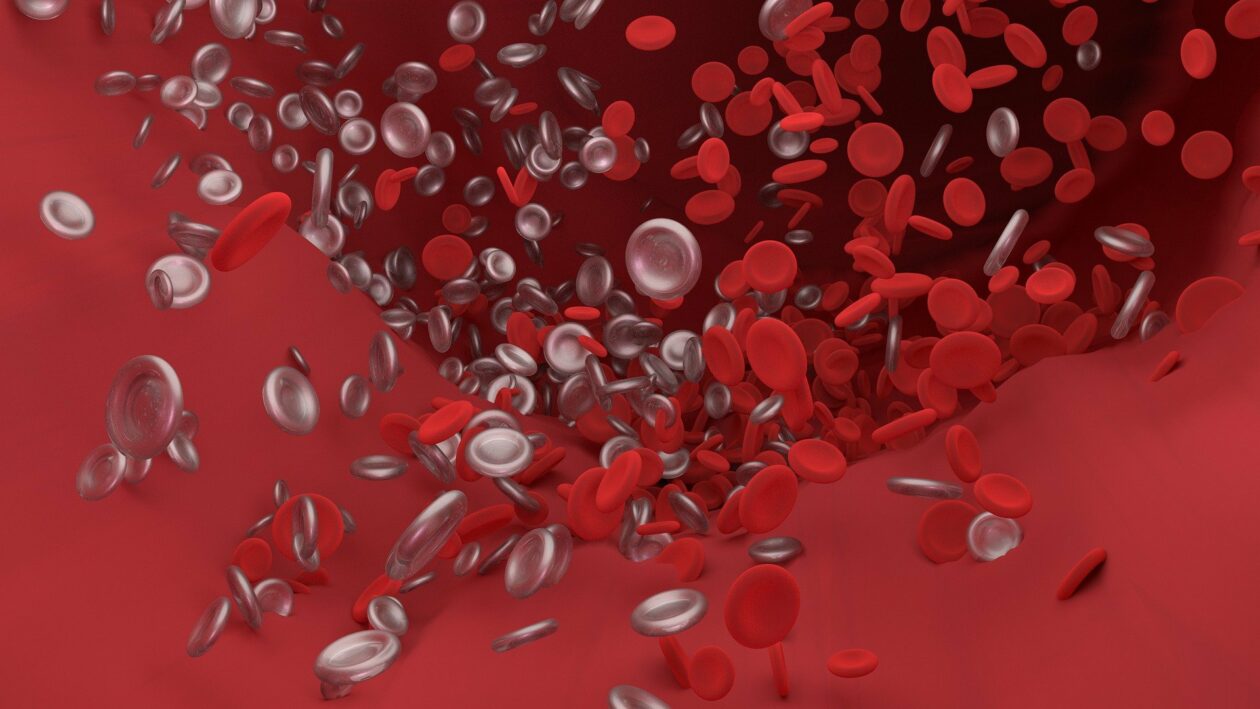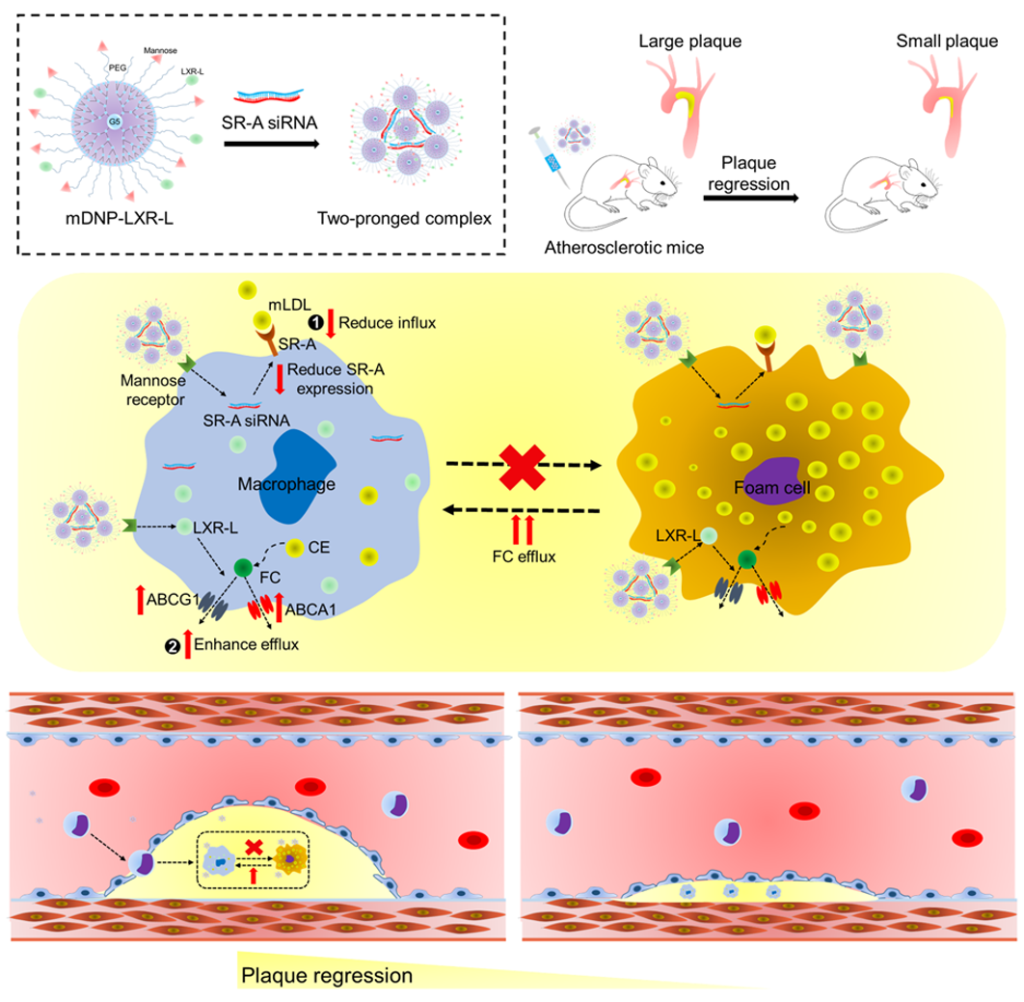New cellular treatment could cure chronic artery disease
Posted by Nancy Bowles

Image by Narupon Promvichai on Pixabay.
NOTE: To see the most recent update on Dr. Yang’s research on this topic, click here.
A new, cellular-level approach to removing plaque build-up in the arteries could eventually lead to a cure for the chronic disease known as atherosclerosis, according to a researcher at Missouri S&T. The method uses nanoparticles that can be designed to deliver plaque-busting drugs to specific cells in arteries. The nanoparticles have an average diameter of 150 nanometers, about 1/500th the diameter of a human hair.
Arterial plaque is made of fats, cholesterol, calcium and other substances in the blood and can restrict blood flow to organs and other parts of the body. Bits of plaque can break loose and cause blood clots that may lead to heart attack or stroke. There is currently no cure for atherosclerosis, but the condition can be slowed with statin drugs and dietary changes. The new method takes a different approach.
“Our nano formulation directly targets plaque cells and shuts down the intake pathway,” says Dr. Hu Yang, chair of the Linda and Bipin Doshi Department of Chemical and Biochemical Engineering at Missouri S&T. “We essentially retrain the cells to move cholesterol and lipids through the arteries without accumulating. The drug can also remove cholesterol that is already in the plaque cells, something current medications cannot do. We have observed a significant reduction in plaque in just a few months of experiments.”

Yang’s research team has filed for a patent that is in the final stage of approval. He says the next step is to understand the body’s mechanism for flushing cholesterol from the system after it clears the arteries and to design the drug’s dose strength.
Yang says the team is building evidence of the treatment’s efficacy so that they can attract interest from pharmaceutical companies. Another goal is establishing human clinical trials to ensure the treatment’s effectiveness and safety.
The atherosclerosis research is an example of how chemical engineering has evolved and is integrating other disciplines, Yang says. He is working on the project with researchers at Virginia Commonwealth University. The journal Biomaterials published the research team’s latest study in its November 2020 issue. The research is supported by the National Institutes of Health.
Yang’s project showcases the types of research that complement the University of Missouri System’s NextGen Precision Health Initiative. NextGen is expected to accelerate medical breakthroughs and improve lives by harnessing the research being done at the system’s four universities and training a new generation of health scientists and practitioners.
About Missouri University of Science and Technology
Missouri University of Science and Technology (Missouri S&T) is a STEM-focused research university of over 7,600 students and part of the four-campus University of Missouri System. Located in Rolla, Missouri, Missouri S&T offers 99 different degree programs in 40 areas of study and is ranked by CollegeFactual as the best public university to study engineering. For more information about Missouri S&T, visit www.mst.edu.
Basic science like this is critical and a great opportunity to teach students. This issue effects many people at some time in their life and current drugs cause side-effects. Naturally, studying potential side effects of nanotechnology is critical as we have seen with Moderna and Pfizer vaccines. Funding parallel studies could put MO S&T in lights! Great going.
Thank you for this article. I found it as I was searching for information on cures for my aortic stenosis heart valve disease. I can see where your school is going to be on the cutting edge of this technology and I would love to be including in any human trials and/or studies that you might acquire knowledge of.
I had TAVR, heart valve replacement surgery 6/16/21, however the build up of plaque in the blood is a continuing process and it seems that this nano technology is going to be the promise of the future.
I have enjoyed reading your articles, Nancy, as I have a passion for higher education myself. I serve on the Board of Trustees for the local Warren County Community College. Our premiere program right now is our Drone Technology Certificates and Degree; so I particularly liked your piece on the use of drones to inspect solar panels.
All my best and keep up the good work.
Just checking to see if clinical trials have started and how to become a participant. Thanks
Allright, that is a great breakthrough, hopefully it will follow thru for great relief for many who suffer. Thank you Patrick Cardinal
Do you need volunteers for any clinical studies. I have plaque and I want to rid myself of it. My calcium score is through the roof!!!
There is no current target date for clinical trials. Funding is needed to get to that point.
Would you please let me know if any trials need participants? Are there any trials being conducted at this time!
There is no current timeline for trials. Additional steps are needed before trials can begin.
Great article & great news! Keep me posted 👍🏻
Thank you for a well written article. What exciting research! Has the clinical trial been started yet since it has been a year since your post? My husband graduated from your campus at Rolla in 1964 and is a supporter
and has received awards. He has a PhD in metallurgical/nuclear engineering from the Un of Tennessee, Knoxville where we r located.
The researchers are looking for opportunities to commercialize or license the technology with venture capital support to address safety and FDA requirements before they can move into clinical trials. No trials are scheduled at this point.
Wonderful
This article is from 1 year ago. Have the human trials begun? I was just diagnosed and would like information.
The researchers are looking for opportunities to commercialize or license the technology with venture capital support to address safety and FDA requirements before they can move into clinical trials. No trials are scheduled at this point.
i was wondering how i could be kept abreast of the development of the “New cellular treatment could cure chronic artery disease” being conducted at MST
Hi, has this treatment been approved? I’m concerned about my arterial plaque and looking for a non-invasive treatment.
I have blocked coratid artery both sides
Would welcome bring part of clinical trial
Other than statins. Have you made a break through on the drug that helps with atherosclerosis? If so, what is the name? Where can you purchase it? Are you still doing clinical trials? If so, where are the locations and how do you participate?
Dear Ms. Bowles,
I read the article “New cellular treatment could cure chronic artery disease” posted by you with interest. Recent blood work that I had for a pre-op procedure showed that I have atherosclerosis. My mother died of a post-op blood clot so it concerns me. I read in the article that Dr. Yang plans to conduct human trials. I’m wondering if I could be a participant. I’m a 71 year old female.
Thank you.
Sue DeVall
Great achievement, God bless you all great minds behind this breakthrough .
Bless you, Nancy, for sharing this encouraging news. It will be a breakthrough that is going to change the lives of many people. I pray the researchers will get their fundings and commercialisation soon. Looking forward to your update on the situation. Thanks.
Hi
I read with great interest about the drug that may be able to remove arterial plaque.
The studies apparently are dated 2020 and 2021; so now I’m curious to get the current updates.
Sincerely
Walter Domareski
i had my first heart attaché at age 36 and now i am 63 and have had 6 bypasses i know it was due to having artories blocked by plack buildup i have been praying for a cure , mother had plack build up she went to the docter and he said he wanted to go and look at her vains she came out of the dr office said she was fine and two weeks later she died of a massive heart attack . on my fathers side is cancers we need to find cures fro this stuff and i am thankfull for the dr that tryes thank you,
Has there been any positive change since 2021?